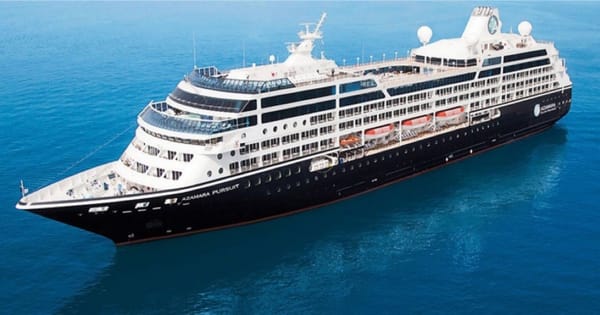AIDA launches clean shore power in Oslo

The recently inaugurated shore power facility in Oslo marks a significant advancement in the cruise industry’s environmental initiatives. This powerful connection allows cruise ships to utilize clean energy while docked, reducing emissions significantly. The event was commemorated on September 24, 2024, with the AIDAluna being the inaugural ship to tap into this new capability.
During the ribbon-cutting ceremony, Vice Mayor Anita Leirvik North and Einar Marthinussen, the Commercial Director of the Port of Oslo, celebrated the groundbreaking project. This facility transitions cruise operations toward greener alternatives, underpinning the cruise industry's commitment to environmental sustainability.
The Importance of Shore Power
Shore power, also known as cold ironing, is a system that allows docked vessels to connect to a land-based electrical grid. Utilizing this technology can greatly reduce air pollution and greenhouse gas emissions that usually result from ships operating auxiliary engines while at berth.
This capability reflects an industry-wide shift towards eco-friendly practices, aiming for net-zero emissions in maritime operations. AIDA Cruises, one of the major players in the cruise industry, has been at the forefront of this movement since 2004, integrating shore power into the design of its ships as a proactive measure against environmental damage.
AIDA's Commitment to Sustainability
AIDA Cruises has emphasized its resolve to maintain environmental stewardship. With the recent addition of Oslo to its list, the company now provides shore power access in 12 ports across six countries in Europe. This expansion illustrates the company's systematic approach to implementing shore power solutions to mitigate operational emissions.
Dirk Inger, AIDA's Senior Vice President for Public Affairs, emphasized the relevance of shore power as a key technology on the path to achieving net-zero emissions. By facilitating access to greener energy sources, cruise lines can substantially lower their carbon footprint during port stays.
How Shore Power Works
The functioning of shore power systems involves the connection between the ship and the electrical grid onshore. When ships dock, they can switch from their onboard generators to use electricity supplied by the local grid.
This transition not only enhances air quality in port cities but also significantly cuts down on noise pollution typically associated with vessels running diesel-powered generators while docked. The benefits of such systems extend beyond the immediate environmental impacts to positively influencing public health and the quality of life in coastal communities.
Development and Implementation
Developing shore power infrastructure requires substantial investment and engineering. Ports must facilitate the installation of power hookups while ensuring compatibility with various cruise vessels and their requirements.
Additionally, local governments and regulatory bodies must come together with port authorities and shipping companies to establish standards that promote the widespread adoption of shore power. This collaborative effort can lead to successful implementation and uniformity across different locations.
Global Trends in Shore Power Adoption
The global trend towards implementing shore power is accelerating, driven by increased environmental regulations and a growing recognition of the need for sustainable shipping practices. Ports around the world are now investing in this technology to stay competitive and accountable to climate goals.
Significant investments have been made in locations such as North America, Europe, and parts of Asia, as cities push for cleaner air and sustainability standards. Each implemented shore power facility helps pave the way for cleaner, greener port operations and maritime activity.
Advantages of Shore Power
Shore power offers numerous benefits for both operators and local communities. For shipping companies, using shore power results in reduced fuel costs, as they can forgo running their auxiliary engines while docked.
Moreover, the decreased emissions translate to fewer regulatory fines and improved public relations, as communities increasingly favor adopting environmentally responsible practices. For local populations, cleaner air and reduced noise contribute to a healthier living environment.
Challenges and Barriers
Despite the advantages, several challenges hinder the wider adoption of shore power. The most significant barrier is the infrastructural investment required to upgrade port facilities.
In addition, the compatibility between various vessels and power systems must be ensured, demanding coordination across multiple stakeholders. Governments must facilitate funding and incentives to assist ports that wish to upgrade their infrastructure to incorporate shore power technology.
Case Studies around the World
Specific examples of successful shore power implementation provide valuable insights and best practices. For instance, California has made significant progress in adopting shore power, particularly in the ports of San Diego and Los Angeles, which allow cruise ships and container vessels to plug into clean energy sources.
Moreover, in Europe, cities like Hamburg and Rotterdam have set precedents for shore power installation. These cases demonstrate the potential of shore power as a viable solution for reducing maritime emissions while improving local air quality.
The Future of Shore Power
The implementation of shore power is expected to grow, with international climate agreements placing increasing emphasis on emissions reduction across all industries, including shipping. As technology evolves, it is likely that systems will become more efficient and easier to implement.
Port authorities, cruise lines, and governments need to prioritize this technology, aligning operations with targets for sustainability and emissions reduction. Figuring out the economic viability of shore power installations is essential in ensuring long-term adoption.
Conclusion
In summary, the opening of the new shore power facility in Oslo is a noteworthy step towards greener cruising. This initiative not only exemplifies AIDA Cruises' commitment to sustainability but also represents a collective effort in the cruise industry to minimize environmental impact.
The continued support for shore power systems worldwide holds the potential to transform maritime operations, fostering a cleaner environment for future generations. As this technology becomes more widespread, it is crucial that all stakeholders work synergistically towards sustainable solutions for the cruise industry.
FAQs About Shore Power
What is shore power?
Shore power is a system allowing docked vessels to connect to a land-based electrical grid, eliminating the need to run diesel engines while at port.
How does shore power benefit the environment?
Shore power significantly reduces air pollution and greenhouse gas emissions associated with running auxiliary engines, thus improving air quality near ports.
Which ports currently offer shore power?
Many major ports, including those in California, Hamburg, and now Oslo, have implemented shore power systems, allowing for cleaner ship operations in those regions.
What challenges does shore power face in adoption?
The major challenges include the high infrastructural investment required and ensuring compatibility with diverse vessel power requirements.
What is the future of shore power in the cruise industry?
With increasing pressure to meet emissions reduction targets, the future of shore power looks promising as more ports and cruise lines commit to adopting this sustainable technology.




